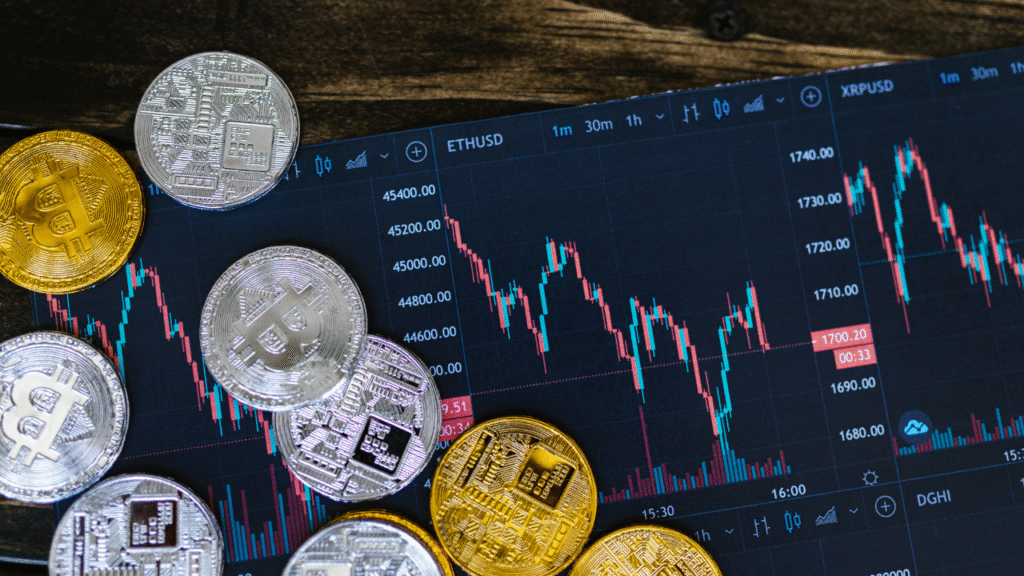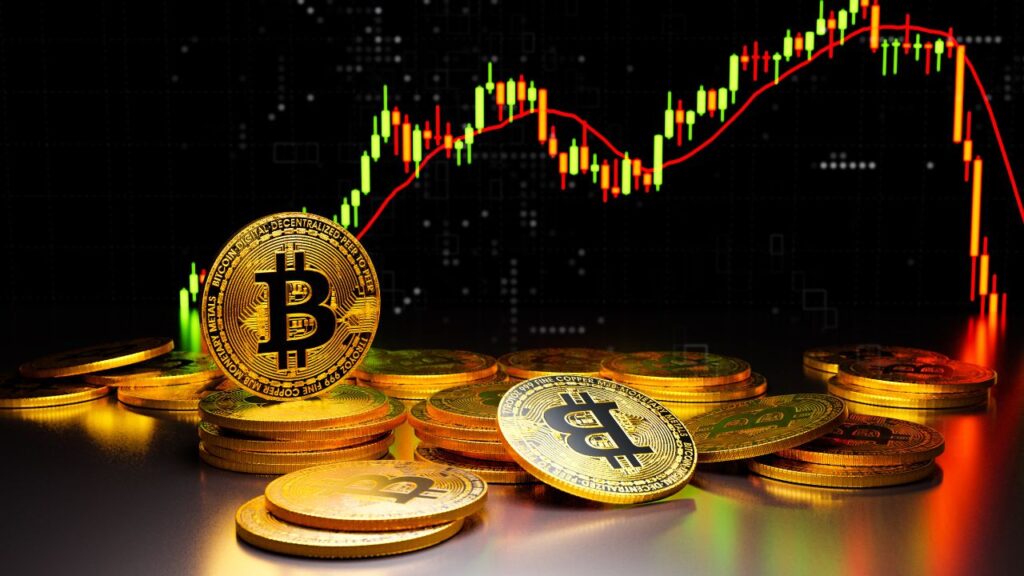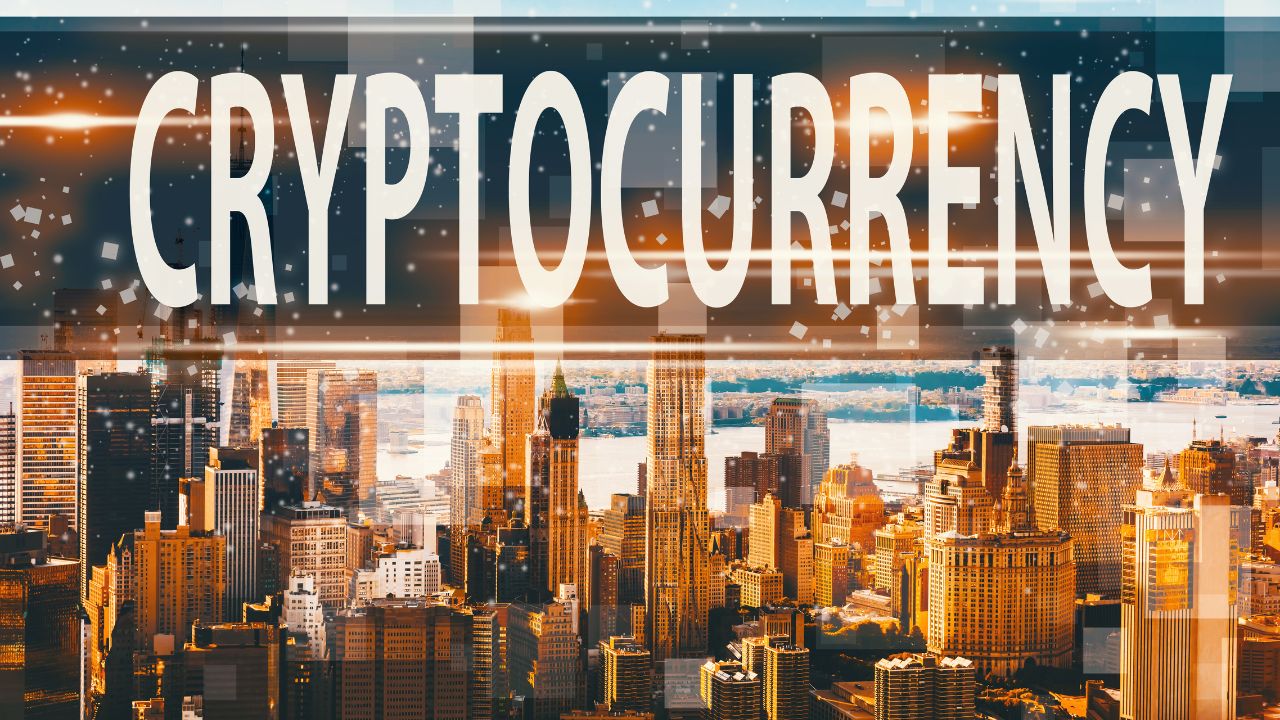Did you know that over 22,000 cryptocurrencies exist today, but only a fraction survive beyond a few years? The secret to their success often lies in a single concept: tokenomics. As the lifeblood of a cryptocurrency’s economy, tokenomics determines everything from scarcity to utility, influencing price and long-term sustainability. In this guide, I’ll walk you through tokenomics explained in simple terms — from supply models to governance, with real-world examples to help you make sense of the crypto markets. Whether you’re an investor, developer, or just curious, this is your starting point!
You can dive deeper into the details and insights by reading the full Project Serenity review here. It’s the best way to see exactly how it works, the benefits it offers, and whether it’s right for you.
What Is Tokenomics?
Definition and Origin of the Term
- Tokenomics is a blend of the words “token” and “economics,” referring to the design, structure, and rules that govern a cryptocurrency’s economy.
- It covers how a token is created, distributed, used, and removed from circulation, along with the incentives for participants in the ecosystem.
- The concept emerged alongside early cryptocurrencies like Bitcoin, when developers began structuring supply schedules, mining rewards, and scarcity models to influence value and adoption.
Why Tokenomics Is Critical for Crypto Projects
- Determines how value flows within a blockchain ecosystem and whether it remains sustainable over time.
- Impacts investor confidence by clearly defining supply, demand, and reward structures.
- Drives adoption by aligning incentives for developers, users, validators, and other stakeholders.
- Poorly designed tokenomics can lead to inflation, low engagement, and eventual project collapse.
How Tokenomics Affects Price, Adoption, and Investor Confidence
- Price: Controlled by supply models (fixed, inflationary, deflationary) and demand drivers such as utility, staking rewards, and governance rights.
- Adoption: Tokens with strong use cases—like paying transaction fees, accessing services, or earning rewards—encourage broader participation in the ecosystem.
- Investor Confidence: Transparent tokenomics and predictable release schedules reduce uncertainty and signal long-term stability, attracting both retail and institutional investors.
Comparison With Traditional Economics
- In traditional economies, central banks and governments control monetary policy, inflation rates, and currency issuance.
- Tokenomics uses predefined code or community governance to control supply and incentives, often removing intermediaries.
- Unlike fiat currencies, many crypto tokens have immutable supply caps or programmed issuance rates, creating predictable scarcity models.
- Blockchain-based economies can implement real-time, automated monetary adjustments (e.g., burning tokens to reduce supply) without requiring central authority intervention.
Discover the full details of Project Serenity here and see why it’s creating a buzz among investors.
Core Components of Tokenomics

Token Supply Models (Fixed, Inflationary, Deflationary)
- Fixed Supply: Total token quantity is capped permanently; scarcity is guaranteed, which can increase perceived value if demand grows. Example: Bitcoin’s 21 million coin limit.
- Inflationary Supply: No hard cap; new tokens are continuously minted at a set or adjustable rate. Often used to reward network participants or fund ongoing development. Example: Dogecoin’s unlimited supply.
- Deflationary Supply: Designed to reduce circulating supply over time through mechanisms such as token burns or buybacks. Example: Binance Coin (BNB) quarterly burns.
- Impact on price dynamics: scarcity drives long-term value potential, while inflationary models require sustained demand to maintain prices.
Token Utility (Payment, Staking, Governance, Rewards)
- Payment: Used as a medium of exchange for goods, services, and transaction fees within the network.
- Staking: Tokens are locked to secure the network, earn rewards, and sometimes gain voting rights in governance.
- Governance: Grants holders the ability to vote on protocol changes, funding proposals, or ecosystem decisions.
- Rewards: Distributed to incentivize user actions such as providing liquidity, participating in network security, or promoting platform growth.
- High-utility tokens tend to foster stronger ecosystems and increase user retention.
Token Distribution (ICO, Airdrops, Mining, Staking Rewards)
- ICO (Initial Coin Offering): Public sale of tokens to raise capital; early buyers often get tokens at lower prices.
- Airdrops: Free token distribution to targeted users, often as a marketing tool or community reward.
- Mining: Proof-of-Work method where participants solve cryptographic puzzles to earn new tokens.
- Staking Rewards: Proof-of-Stake approach where tokens are distributed to validators or delegators as incentives for securing the network.
- Balanced distribution strategies help avoid centralization of token ownership and reduce sell-off risks.
Governance Structures (On-Chain, Off-Chain, Hybrid Models)
- On-Chain Governance: Token holders vote directly via blockchain-based systems, and outcomes are implemented automatically.
- Off-Chain Governance: Discussions and decisions occur through forums or community channels, later executed by developers or core teams.
- Hybrid Models: Combine token-holder voting with decision-making by a core governance body or foundation.
- Effective governance models ensure community participation, protocol adaptability, and long-term sustainability.
Start your journey toward financial freedom with Project Serenity today.
Token Supply Explained

Circulating Supply vs. Total Supply vs. Max Supply
- Circulating Supply: The number of tokens currently available and actively trading in the market. Excludes locked, reserved, or burned tokens.
- Total Supply: The total number of tokens that exist, including those locked or reserved, minus any burned tokens.
- Max Supply: The absolute limit of tokens that will ever exist, if such a cap is set in the token’s code.
- Understanding these metrics helps evaluate scarcity, potential dilution, and a token’s market capitalization.
The Role of Scarcity in Token Value
- Scarcity can create perceived value, similar to commodities like gold.
- Fixed-supply tokens often benefit from scarcity-driven demand if adoption grows.
- Projects may use controlled issuance schedules or token burns to maintain scarcity over time.
- A balance between availability and scarcity ensures both usability and long-term value appreciation.
Examples: Bitcoin (Fixed), Ethereum (Dynamic), Solana (Inflationary with Burns)
- Bitcoin: Hard cap of 21 million coins, issued at a decreasing rate through halving events approximately every four years.
- Ethereum: No fixed cap; dynamic supply with both new issuance (staking rewards) and deflationary pressure from transaction fee burns (EIP-1559).
- Solana: Inflationary model starting at 8% annual issuance, decreasing over time, combined with a 50% transaction fee burn mechanism.
How Inflation and Deflation Mechanisms Impact Price
- Inflationary Mechanisms: Increase supply over time; price stability or growth depends on demand matching or exceeding new issuance.
- Deflationary Mechanisms: Reduce supply via burns or buybacks, potentially increasing token value if demand remains stable or rises.
- Hybrid Approaches: Combine modest inflation for rewards with deflationary burns to balance network incentives and scarcity.
Learn how you can unlock new investment opportunities through Project Serenity.
Understanding Token Utility

Transaction Fees and Network Usage
- Many blockchains require users to pay transaction fees in the network’s native token to send funds, deploy smart contracts, or interact with dApps.
- Higher network usage increases demand for the token as more users need it to complete transactions.
- Examples: ETH for Ethereum gas fees, SOL for Solana transaction costs, BNB for BNB Chain operations.
- Fee-burning mechanisms can add a deflationary aspect, potentially boosting token value over time.
Staking and Securing the Blockchain
- In Proof-of-Stake (PoS) systems, token holders can lock up their assets to become validators or delegate to validators, helping secure the network.
- Stakers earn rewards—often paid in the same token—for participating in consensus and validating transactions.
- Staking reduces circulating supply and can create steady buy pressure as participants accumulate tokens to earn yield.
- Examples: ADA on Cardano, DOT on Polkadot, and ETH post-Merge on Ethereum.
Governance and Voting Rights
- Governance tokens grant holders the ability to propose and vote on protocol upgrades, parameter changes, and treasury allocations.
- Voting power is often proportional to the number of tokens held, incentivizing long-term holding for influence.
- This decentralizes decision-making, giving users a direct role in shaping the project’s future.
- Examples: UNI for Uniswap protocol decisions, MKR for MakerDAO governance.
Rewards, Incentives, and Ecosystem Participation
- Tokens can be distributed as rewards to encourage specific behaviors, such as providing liquidity, promoting the platform, or completing in-game tasks.
- Incentive programs, such as liquidity mining or yield farming, attract new users and capital into the ecosystem.
- Reward structures can align the interests of the community, developers, and investors toward mutual growth.
- Well-designed incentives foster engagement and create a loyal user base.
Check out Project Serenity’s exclusive program and see if it’s the right fit for you.
How Tokens Are Distributed

ICOs and Public Sales
- Initial Coin Offerings (ICOs): Token pre-sales to the public, often used to raise funds before a project launches.
- Public buyers typically purchase tokens at an early stage, sometimes at discounted rates, in exchange for crypto like BTC or ETH.
- ICOs can generate rapid capital but must balance investor incentives with long-term token stability.
- Regulatory considerations vary by jurisdiction and can impact structure and investor access.
Private Allocations to Teams and Investors
- Tokens reserved for founders, team members, advisors, or venture capital backers.
- Typically acquired before public sales at favorable terms, often in exchange for capital, expertise, or resources.
- Large private allocations can create market risks if not paired with vesting schedules.
- Strategic investors can add value through marketing, partnerships, and ecosystem support.
Airdrops as a Marketing Strategy
- Free distribution of tokens to specific wallets to promote awareness, reward early adopters, or attract new communities.
- Often used to bootstrap user bases, increase liquidity, and create buzz around the project.
- Targeted airdrops can align with complementary projects’ users to tap into relevant audiences.
- May include eligibility requirements like holding a specific token or completing certain actions.
Mining and Staking Reward Systems
- Mining (Proof-of-Work): Tokens issued as block rewards to miners who validate transactions using computational power.
- Staking (Proof-of-Stake): Tokens distributed to validators or delegators for securing the network and maintaining consensus.
- Reward systems incentivize participation and help bootstrap decentralization.
- The issuance rate directly impacts token inflation and long-term supply dynamics.
Vesting Schedules and Lock-Ups
- Pre-determined timelines for releasing allocated tokens to prevent large sell-offs that could destabilize the market.
- Vesting for team and investor tokens often ranges from 6 months to 4 years, sometimes with a cliff period before the first release.
- Lock-ups encourage long-term alignment with the project’s growth and discourage speculative dumping.
- Publicly transparent vesting schedules improve investor trust and market stability.
Ready to take the next step? Explore Project Serenity now.
Governance and Tokenomics

Why Governance Matters for Token Value
- Governance determines how a project evolves, impacting its security, adaptability, and market trust.
- Transparent, decentralized decision-making can increase investor confidence and attract long-term participation.
- Poor governance structures can lead to stagnation, centralization, or controversial decisions that harm token value.
- The governance process can directly affect tokenomics, such as changing supply schedules, reward rates, or burn policies.
On-Chain vs. Off-Chain Governance Explained
- On-Chain Governance: Token holders vote directly on proposals using blockchain-based mechanisms, with results automatically enforced by smart contracts. Offers transparency, immediate execution, and verifiable outcomes.
- Off-Chain Governance: Discussions and voting happen outside the blockchain, often via community forums, social channels, or governance platforms like Snapshot. Implementation relies on core teams or foundations.
- Hybrid approaches blend off-chain discussions for flexibility with on-chain voting for transparency and execution.
Role of Governance Tokens in Decision-Making
- Governance tokens give holders proportional voting power based on their token holdings.
- Used to approve protocol upgrades, allocate treasury funds, or change economic parameters.
- Encourages active community participation, aligning token holders’ interests with the project’s success.
- Can create a governance-driven market demand for tokens, as influence becomes a sought-after asset.
Case Studies of Governance Models (e.g., Uniswap, MakerDAO)
- Uniswap (UNI): Token holders propose and vote on protocol upgrades, fee changes, and treasury allocations. Governance decisions are made via on-chain voting with thresholds for proposal submission and quorum.
- MakerDAO (MKR): MKR holders vote on risk parameters, collateral types, and monetary policies for the DAI stablecoin system. Governance is ongoing and critical to maintaining the peg and system health.
- Both models highlight how governance tokens integrate community decision-making with protocol stability, influencing adoption and trust.
Discover what makes Project Serenity different from anything you’ve tried before.
Real-World Examples of Tokenomics in Action
Bitcoin – Scarcity-Driven Value Model
- Fixed maximum supply of 21 million BTC, hardcoded into the protocol.
- New coins are issued through Proof-of-Work mining, with rewards halved approximately every four years in “halving” events.
- Scarcity and predictable issuance schedule create a deflationary supply curve over time.
- Market perception of Bitcoin as “digital gold” reinforces its value proposition as a long-term store of value.
Ethereum – Dynamic Supply with Burn Mechanism
- No hard supply cap; ETH issuance occurs through Proof-of-Stake staking rewards.
- EIP-1559 introduced a base transaction fee burn, permanently removing a portion of ETH from circulation.
- Network activity can make ETH net-deflationary when burned fees exceed staking issuance.
- Strong utility as “gas” for transactions, smart contracts, and DeFi/NFT ecosystems drives constant demand.
Solana – Inflation with Fee Burn Offsets
- Starts with an annual inflation rate of 8%, decreasing gradually each year until stabilizing at 1.5%.
- 95% of newly minted SOL goes to staking rewards, 5% to the Solana Foundation for ecosystem growth.
- 50% of transaction fees are burned, adding a deflationary counterweight to inflationary issuance.
- High throughput and low fees make SOL attractive for developers, NFT markets, and DeFi platforms.
How These Models Attract Different Types of Investors and Users
- Bitcoin: Appeals to long-term holders seeking scarcity, inflation resistance, and a store of value.
- Ethereum: Attracts developers, DeFi/NFT users, and investors who value strong utility and adaptive economics.
- Solana: Draws high-volume dApp developers, traders, and users looking for speed, scalability, and low transaction costs.
- Tokenomic design shapes not only investment behavior but also the ecosystem’s growth trajectory and community profile.
Click here to learn more about Project Serenity and how it works.
Key Metrics to Analyze in Tokenomics

Market Cap and Fully Diluted Valuation (FDV)
- Market Capitalization: Calculated as token price × circulating supply; reflects current market value based on tradable tokens.
- Fully Diluted Valuation (FDV): Calculated as token price × maximum supply; projects the market value if all tokens were in circulation.
- Comparing market cap to FDV helps assess potential dilution risk and long-term valuation.
- Large gaps between market cap and FDV may indicate significant upcoming token unlocks.
Token Release Schedules and Unlock Dates
- Defines when locked tokens (team, investors, ecosystem funds) will be released into circulation.
- Release schedules can be linear (steady unlocks) or cliff-based (large amounts released at specific dates).
- Major unlock events can create selling pressure, impacting short-term price.
- Publicly available schedules increase transparency and investor trust.
Staking Yield and Participation Rate
- Staking Yield: The annual percentage return for staking tokens, which incentivizes holders to lock their tokens.
- Participation Rate: Percentage of total supply actively staked; higher rates can reduce circulating supply and volatility.
- A balanced yield attracts participation without causing excessive inflation.
- Low participation rates may indicate a lack of confidence in the network or unattractive reward structures.
Inflation Rate and Burn Statistics
- Inflation Rate: Annual percentage increase in total token supply due to rewards, mining, or other issuance methods.
- Burn Statistics: The rate and amount of tokens permanently removed from supply through mechanisms like fee burns or buybacks.
- Net token supply change = Inflation rate − Burn rate; a negative figure indicates deflationary pressure.
- Monitoring these figures helps predict long-term scarcity and potential price impact.
Get insider access to the benefits of Project Serenity today.
Conclusion
Tokenomics isn’t just crypto jargon — it’s the backbone of a digital asset’s value and longevity. By understanding supply, utility, distribution, and governance, you can spot red flags, identify promising projects, and make more informed investment decisions. Remember, in the volatile world of crypto, knowledge isn’t just power — it’s profit. So keep learning, keep questioning, and dive deeper into the mechanics that drive the next generation of money.
Ready to dive deeper into what Project Serenity can do for you?
Discover the full details, benefits, and my honest verdict in the complete review.
👉 Read the full Project Serenity Review here

